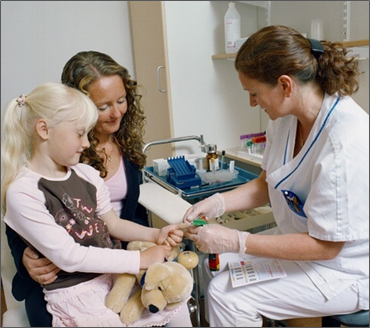The Affordable Care Act (ACA) was passed formally in 2012. Since then, the emphasis on patient experience has seen a significant rise among health care providers. Reimbursements and penalties are now based almost entirely on the quality of care. Consequently, providers across the continuum of care, from single clinics to large hospital centers, are paying particular attention to how each patient perceives the care they received.

For more than 30 years, the Press Ganey Score has functioned comparably to a B2B Net Promoter Score (NPS) score. The organization partners with more than 50% of all U.S. hospitals to help improve clinical and business outcomes by assessing the total patient experience. Ratings are based on the provider’s ability to create and sustain a high-performance environment that ultimately improves the patient experience.
In this ACA environment, patient experience scoring is more important than ever. Like Press Ganey, the company I work for has spent more than three decades helping healthcare providers to create the best possible patient experience by gathering feedback data. Based on this experience we recommend a few priorities that can reliably satisfy ACA requirements and position caregivers as leaders:
- Simplify Appointment Scheduling
According to a Pew Research report, 60% of people research doctors and hospitals online. By making it simple for a prospective patient to find information and connect with your clinic, you improve the chance of seeing him or her in your clinic. - Create a Friendly Environment
Research shows that the friendliness of the office staff has the greatest impact on a positive patient experience. By starting a patient’s visit with a pleasant, welcoming environment, healthcare providers immediately improve the chance of a higher satisfaction rating. One of the best ways to do that is to keep staff informed and utilized properly. Cejka Search and the American Medical Group Association have reported that the turnover rate of nurse practitioners and physician assistants (often the front line caregivers) can be twice as high as physicians because of poor utilization. By automating patient scheduling and providing information about patients, your staff remains equipped to do the best job possible, which creates a positive environment for everyone. - Reduce Perceived Waiting Times
On average, it takes a patient 48 minutes to meet with a physician. That time is segmented between waiting to be called into the examination room, and then waiting in the examination room. While decreasing waiting times do have a positive effect on patient experience, communicating with patients has an even bigger impact. In fact, in a study of 5,000 patient participants, 80% of participants said that knowing their wait time in advance would eliminate frustration. - Lessen Confusion
Solutions like digital signage, patient appointment management software and media displays throughout the office go a long way to prevent confusion.Displays can let patients know their position in line, inform them about how they should be prepared for their visit, or even how to validate their parking. - Survey Customers in Real Time
Giving each patient the opportunity to answer a simple survey in the office environment not only makes them feel valued, it generates important data about the patient experience in real time. That information is important for filing reimbursements, and the immediacy of the data allows providers to remain consistently aware of how to cultivate the best possible care environment. Qmatic solutions like Expressia generate and record immediate, actionable insights into the total patient experience, from greeting through treatment. - Follow Up with the Patient
Patient contact shouldn’t stop after they leave the facility. Top quality care involves ongoing communication. By reaching out to patients after the visit, caregivers show attentiveness and build relationships that keep patients coming back.

A mobile app for patients allowing them to make appointments, virtually wait anywhere and to check in remotely decrease the perceived waiting time.
In today’s complex healthcare compliance atmosphere, it’s more important than ever to remain connected, aware, and agile. Let these insights inspire you to create the care environments that patients appreciate most.
Image Courtesy: Qmatic



